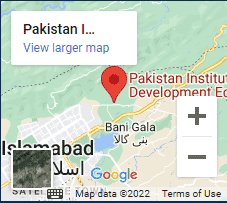
Pakistan Institute of Development Economics
- Home
Our Portals
MenuMenuMenuMenuMenuMenuMenu - ResearchMenuMenuMenuMenuMenuMenuMenu
- Discourse
- The PDR
- Our Researchers
- Academics
- Degree Verification
- Thesis Portal
- Our Portals
THE PAKISTAN DEVELOPMENT REVIEW
Land Agglomeration under Changing Technology: Some Inferencesfrom Pakistan
The paper studies the intertemporal trend of land distributionwith a view to checking the legitimacy of the thesis that landdistribution deteriorated under the Green Revolution in Pakistan byexamining the arguments given in support of this thesis. The empiricalevidence cited in this study indicates that land distribution inPakistan either improved (as from 1960 to 1972) or remained unchanged(as between 1972 and 1980). This trend in land distribution serves toshow that technological changes were accompanied by significantimprovements in land distribution between 1960 and 1980. Large increasesin the ownership area of small farmers between 1972 and 1980 vis-a-visthe decreases in the ownership area of large farmers during the sameperiod render untenable the view that Green Revolution led to aworsening of land distribution because of land purchases by largefarmers. Substantial gains in the operational area of large farmers, dueeither to large areas of land rented in or to increasedself-cultivation, appear to be unlikely in view of the continued andrising dependence of those farmers on tenants. Favourable changes in thedistribution of ownership and operational holdings seem to be the resultof the widespread impact of Green Revolution on the profitability ofagriculture, growing labour’scarcities, land reforms, inheritance laws,and the general trends in the economic development ofPakistan.


